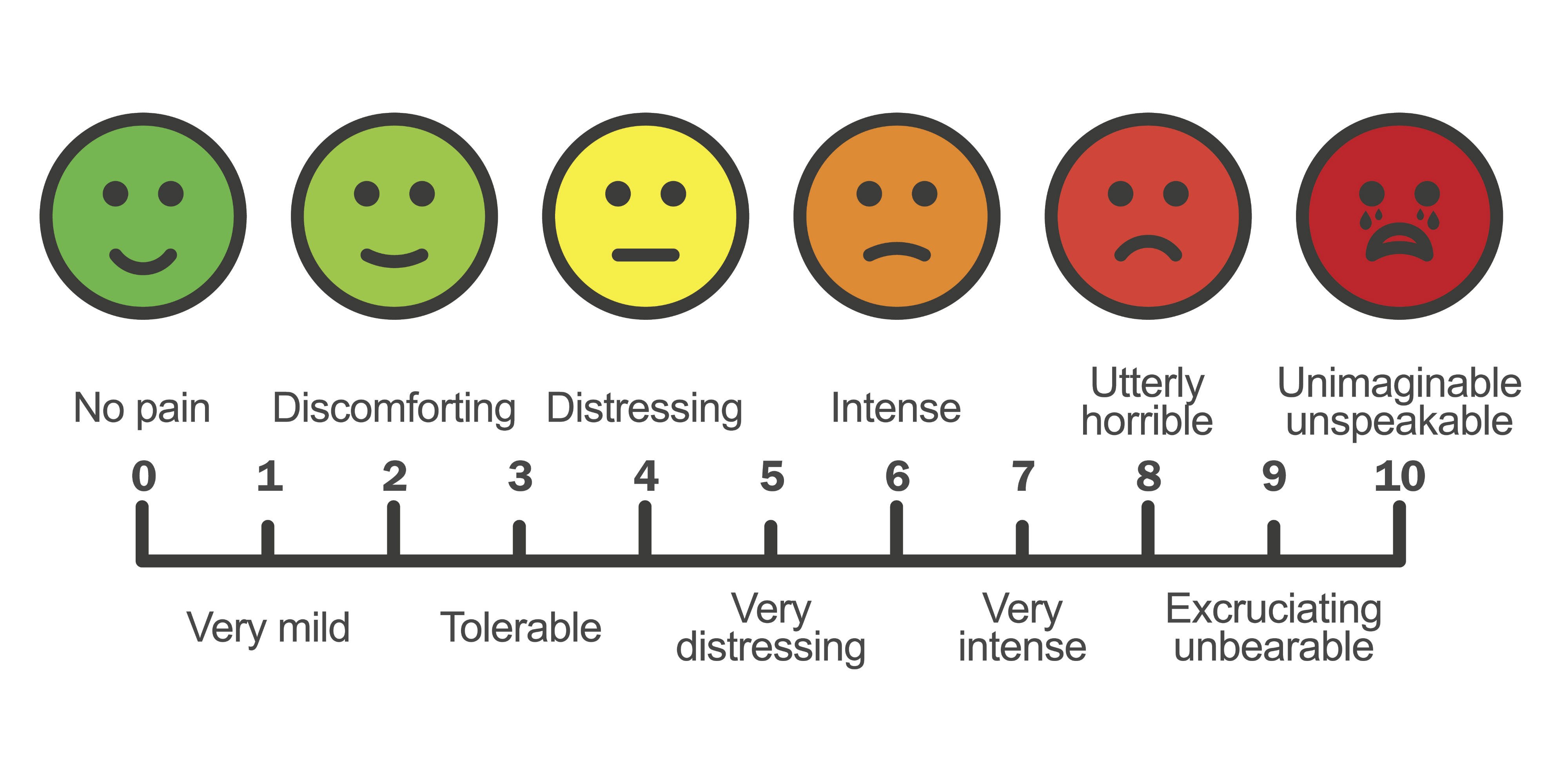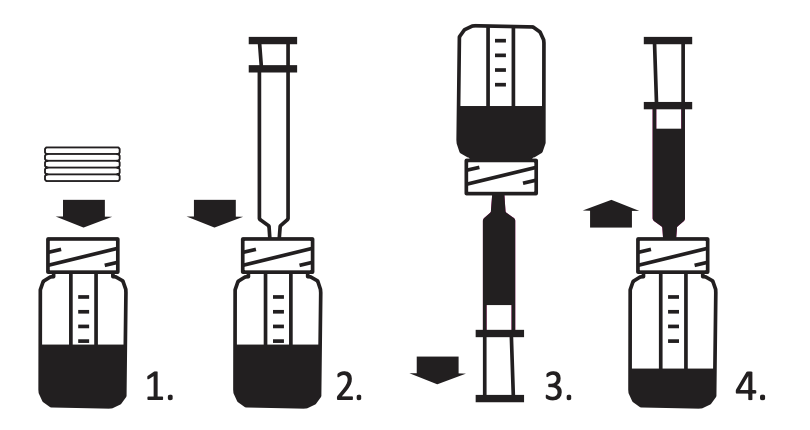Symptom Management
The following provides an overview of symptom management, including pharmacologic and nonpharmacologic methods for relieving your symptoms.
Pain
While pain can be both a physical sensation and an emotional experience, it is important for your Hospice team to understand and trust your report of pain. Only you can best describe the pain, its intensity and the effectiveness of various pain relief measures. If you cannot express your pain verbally or reliably, your hospice team will rely on nonverbal indicators of pain such as facial and body expressions, heart rate and respiratory rate.
 Using the same system for evaluating pain each time will indicate how your pain is changing. This helps to determine how much relief you are getting from your current dosage of pain medicine. One commonly-used method of evaluating pain is the numeric scale. In this method, 0 equals no pain and 10 equals the worst pain imaginable.
Using the same system for evaluating pain each time will indicate how your pain is changing. This helps to determine how much relief you are getting from your current dosage of pain medicine. One commonly-used method of evaluating pain is the numeric scale. In this method, 0 equals no pain and 10 equals the worst pain imaginable.
If your pain score is consistently low, your pain management plan is working. If your pain score is consistently high, perhaps you need more medication, a different schedule, or a different medication.
Evidence suggests that the preventive approach works best in managing chronic pain. Often this means taking pain medication on a regular basis instead of simply as needed. If you wait too long to take your pain medication, the pain can potentially become so severe that the medication is no longer effective. Therefore, maintaining a regular medication schedule is the best means of managing pain. Remember, too, that once you become pain free it’s important to continue the medication schedule as directed by your physician. Anxiety, tension, and depression can amplify one’s experience of pain. You may need medication in addition to that used for pain to help in the management of your overall comfort. Medication for chronic pain should be taken at regular intervals. Your Hospice nurse and attending physician will help you establish the best times to use the medications. Accurate record-keeping regarding the time of day you take your pain medications allows your hospice team to better manage your pain control needs.
Non-Pharmacological Methods for Relieving Pain
Notify Azorna Hospice immediately if:
The medication cannot be taken as prescribed.
Pain is experienced in new areas.
There is an increase in the intensity of pain.
There are concerns about over-sedation.
You experience symptoms of confusion, restlessness, “bad dreams” or hallucinations.
- Meditation
- Music
- Guided imagery
- Use of cool or warm packs
- Changing position
- Massage or Reiki Therapy
- Distraction
Pharmacological Methods for Relieving Pain
Liquid morphine concentrate maybe ordered by hospice. Depending on the type and severity of your pain, your hospice nurse in collaboration with your attending physician may recommend this medication. Only use this medication as instructed by your hospice nurse.
 How to Set-up and Administer Liquid Morphine
How to Set-up and Administer Liquid Morphine
- Uncap the bottle and cut out the thick silver seal (this may require a sharp knife or scissors).
- Insert the bottle plug into neck of bottle, ribbed end first, with or without the syringe attached (see figure1).
- If not already attached, insert the syringe tip into hole on the top of the plug until secure (see figure 2).
- Turn the bottle upside down and pull down white syringe plunger so the blue liquid lines up with the line on the syringe corresponding to prescribed dose (see figure 3).
- Turn bottle right side up and remove the syringe (see figure 4).
- Administer the medication by slowly pushing the plunger until the oral syringe is empty. If the person is unable to swallow, administer the medication into the cheek pocket. This medication will work whether swallowed or left in the mouth.
- Leaving the plug in the bottle, recap the bottle tightly.
Anxiety
Anxiety tends to be a feeling involving worry or nervousness; it is a natural human response to real or perceived uncertainties or fears. Within the framework of hospice, a certain level of anxiety is not uncommon. However, when anxiety is prolonged and ongoing, it has the potential to impact an individual’s quality of life and, at times, even their safety. Anxiety can often intensify the perception of an existing symptom, especially pain and shortness of breath. Potential causes of anxiety include: breathing trouble, anticipation of increased pain, facing the unknown aspects of a life-limiting condition, unresolved emotional issues regarding one’s life, directly caused by a disease process (such as advanced dementia), or diagnosed or undiagnosed mental illness. Signs of anxiety may include feeling tense, fearful of being alone, frequently asking for help from your family or caregivers, shortness of breath for no apparent reason, difficulty sleeping and inability to concentrate.
Non-Pharmacological Methods for Relieving Anxiety
- Discussing your concerns with others can help. Consider calling your Hospice Social Worker or Chaplain.
- Practicing deep breathing exercises or listening to soothing music.
Pharmacological Methods for Relieving Anxiety
Lorazepam (Ativan) is a common hospice medication and may be used as instructed by your physician and/or hospice nurse. In low doses this anti-anxiety medication is generally effective and well-tolerated.
Nausea/Vomiting
Nausea and/or vomiting may occur for a variety of reasons. Your hospice nurse will help you manage these symptoms in the context of the underlying medical cause. For example, some people report experiencing nausea upon taking the first few doses of morphine. This initial side effect usually subsides and often completely goes away with subsequent doses. Diseases involving the liver or kidneys may cause nausea. When the movement of food in the intestines is slowed or blocked, the “back up” can generate the feeling of nausea.
Non-Pharmacological Methods for Relieving Nausea
- Carbonated drinks such as ginger ale. Ginger-flavored teas, hard candies and lollipops.
Pharmacological Methods for Relieving Nausea
Phenergan may help manage symptoms of nausea. Your hospice nurse can help determine if other anti-nausea medications may be appropriate for your situation.